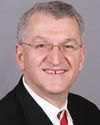Thank you, Madam Chair.
Thank you to all the presenters.
The 10-year plan committed government to increase the number of health professionals, including targets for training, retention, and recruitment, and making their plans public—it asked that everybody make their plans public. Also, the federal government agreed to expand assessment of internationally trained graduates, make efforts in aboriginal communities, reduce the financial burden on students, and so on.
Mr. Davis, you mentioned that there's a shortage of laboratory staff. Have your membership numbers increased in the last three or four years, or have they remained relatively similar?




